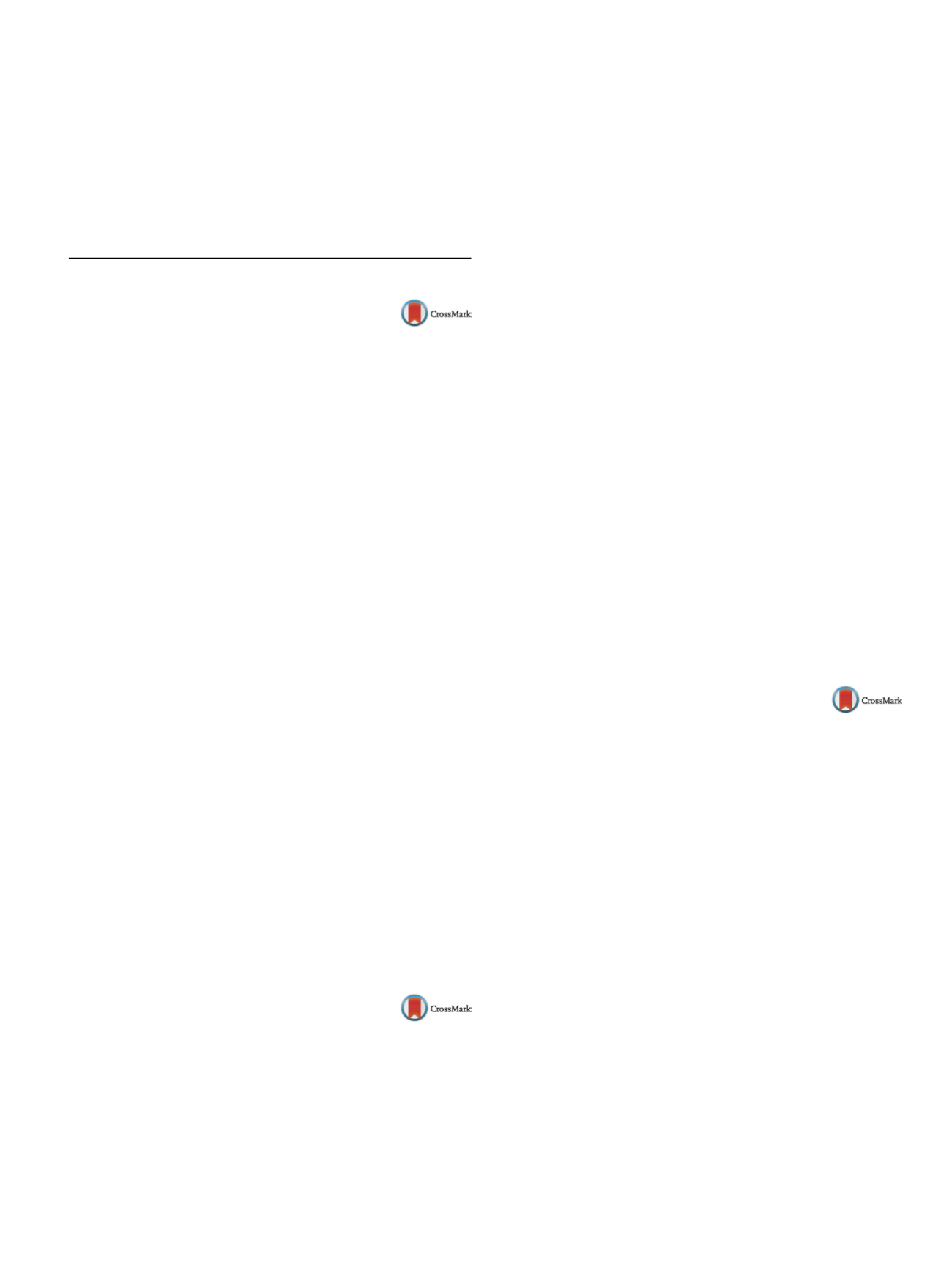

25th European Congress of Psychiatry / European Psychiatry 41S (2017) S710–S771
S767
Disclosure of interest
The authors have not supplied their decla-
ration of competing interest.
http://dx.doi.org/10.1016/j.eurpsy.2017.01.1443e-Poster Viewing: Psychosurgery and stimulation
methods (ECT, TMS, VNS, DBS)
EV1114
The legacy of Walter Jackson Freeman
II (1896–1972): The lobotomist
M. Arts
1 ,∗
, P. Michielsen
2, S. Petrykiv
3, L. De Jonge
41
University of Groningen, University Medical Center Groningen,
Department of Old Age Psychiatry, Groningen, The Netherlands
2
GGZWNB, Clinical Psychiatry, Bergen op Zoom, The Netherlands
3
University of Groningen, University Medical Center Groningen,
Department of Clinical Pharmacy and Pharmacology, Groningen, The
Netherlands
4
Leonardo Scientific Research Institute, Geriatric Psychiatry,
Groningen, The Netherlands
∗
Corresponding author.
Introduction
Walter Jackson Freeman II was born the grandchild
of WilliamWilliams Keen, one of world’s most renowned surgeons
from Philadelphia and the son of an otorhinolaryngist, which may
have been contributed to his interest in medicine. Freeman started
his medical career in a psychiatric hospital and over the years, he
operated thousands of patients. He was a protagonist in Ameri-
can psychosurgery and therefore, he often has been referred as the
“lobotomist”.
Objectives
To present the scientific papers of Walter Jackson
Freeman on psychosurgery.
Aims
To review available literature and to show evidence that
Freeman made a significant though controversial contribution to
the development of psychosurgery.
Methods
A biography is presented and discussed followed by a
literature review.
Results
In this whole career, “the lobotomist” operated more
than 3500 patients and performedmainly operations on the frontal
areas. However, he operated human brains without due regard for
his patient’s mental abilities and emotional well-being after their
lobotomy. Despite his work was praised, there was also a lot of
criticism on his methods.
Conclusion
Despite the dubious reputation, Freeman can be
remembered as an ambitious doctor who made a significant
contribution to the development of psychosurgery. However,
unfortunately he crossed medical and legal boundaries.
Disclosure of interest
The authors have not supplied their decla-
ration of competing interest.
http://dx.doi.org/10.1016/j.eurpsy.2017.01.1444EV1115
A systematic review of transcranial
magnetic stimulation use for treating
autistic spectrum disorders:
Preliminary results
B. Barahona-Corrêa
1 , 2 , 3 ,∗
, A. Chainho
4, R. Lopes
2 , 41
NOVA Medical School, Faculdade de Ciências Médicas de Lisboa,
Department of Psychiatry and Mental Health, Lisbon, Portugal
2
CADIn, Centro de Apoio ao Desenvolvimento, Cascais, Portugal
3
Champalimaud Clinical Centre, Champalimaud Centre for the
Unknown, Neuropsychiatry Unit, Lisbon, Portugal
4
CISIUL, Centro de Investigac¸ ão e Intervenc¸ ão Social, Instituto
Universitário de Lisboa, LAPSO, Laboratório de Psicologia Social e das
Populac¸ ões, Lisbon, Portugal
∗
Corresponding author.
Autistic spectrum disorders (ASD) are a group of neurodevelop-
mental disorders that manifest as deficits in social communication
and interaction, and restricted, repetitive behaviors and interests.
ASD affect at least 1% of the population and are associated with
lifelong disability and early death. There are no effective biological
treatments for ASD, although non-invasive neuromodulation has
sparked great interest as a possibly useful therapeutic approach.
Here, we present preliminary results of a systematic review on the
effectiveness of transcranial magnetic stimulation (TMS) in ASD
treatment. Using appropriate syntax we searched Pubmed, Web
of Science, Science Direct, and Educational Resources Information
Clearinghouse. Following standard PRISMA statement (Preferred
Reporting Items for Systematic Reviews andMeta-analyses) proce-
dures, we selected 12 eligible studies, comprising four controlled
and four uncontrolled trials on the effects of TMS onASD core symp-
toms, and 9 controlled and three uncontrolled trials on TMS effects
on cognitive performance in ASD. The 12 studies totaled 233 sub-
jects. Although combined effect sizes favor TMS in all fours groups
of studies, conclusions are limited by the high study heterogeneity.
Furthermore, only three of the controlled studies used sham TMS
as the control intervention, and only two studies followed up the
therapeutic effects after the last TMS session. Side effects, none of
them serious, occurred in 6.4% of treated subjects. Our main con-
clusion is that there is currently little evidence that sustains the
commercial offer of TMS for treating ASD. Better-designed studies
are badly needed to fully elucidate the role of TMS in the treatment
of ASD.
Disclosure of interest
The authors have not supplied their decla-
ration of competing interest.
http://dx.doi.org/10.1016/j.eurpsy.2017.01.1445EV1116
Place of electroconvulsive therapy in
the treatment of depression in France:
A comparative study between clinical
practice and international
recommendations
T. Charpeaud
1 ,∗
, A. Tremey
1, P. Courtet
2, B. Aouizerate
3,
P.M. Llorca
11
CHU de Clermont-Ferrand, service de psychiatrie B,
Clermont-Ferrand, France
2
CHU de Montpellier, département des urgences et post-urgences,
Montpellier, France
3
Centre Hospitalier Charles-Perrens, Pôle de Psychiatrie, Bordeaux,
France
∗
Corresponding author.
Objectives
To study the place of electroconvulsive therapy (ECT)
in the treatment of major depressive disorder in France and com-
pare it with international recommendations and algorithms.
Method
Multicenter, retrospective study in 12 French university
hospitals. Diagnosis, delay between the onset of the episode and
the first day of ECT, previous treatments have been identified. Only
patients treated for major depressive disorder between 1 January
2009 and 1 January 2014 were included.
Results
A total of 754 patients were included (middle age
61.07 years, sex ratio 0.53). The diagnoses listed were: first major
depressive episode (14.95%), bipolar depression (38.85%) and
unipolar recurrent depression (46.19%). The delay before ECT,
was 11.01months (13,98), and was significantly longer for first
episodes (16.45months,
P
< 0.001) and shorter in case of psychotic
symptoms (8.76months,
P
< 0.03) and catatonic symptoms (6.70,
P
< 0.01).


















